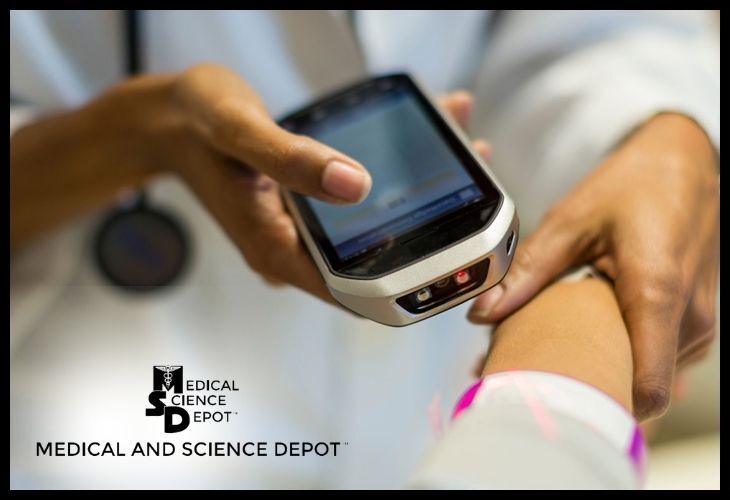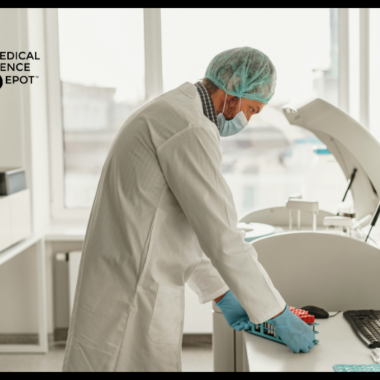The Internet of Things (IoT) is slowly entering the healthcare industry, offering significant potential for more positive patient health outcomes. IoT makes healthcare more accessible and efficient and can enhance how processes operate in the medical industry. It is becoming apparent that IoT application cases in healthcare will be the future, from enhanced equipment control to virtual medical aid — all in view to making a worthwhile difference for both medical professionals and patients. Here are five revolutionary devices that are already proving their value:
The healthcare industry is rapidly adopting IoT technology. According to a report by MarketsandMarkets, the global market for IoT in healthcare will grow from $127.7 billion in 2023 to $289.2 billion by 2028.
The majority of IoT devices used in healthcare are related to remote patient monitoring. Wireless loT sensors collect information and process it automatically using advanced algorithms based on artificial intelligence (AI) technology. They provide valuable insight into how the body works, while also allowing doctors to monitor patients remotely through cloud computing platforms like IBM Watson Health Cloud Analytics.
IoT has been used to improve the quality of patient care. Below are some examples of how IoT technology has made a difference in various areas of medicine.
1. Glucose Monitoring for Diabetics
According to International Diabetes Federation, 537 million people are living with diabetes worldwide, with 6.7 million people dying of it in 2021 alone. This means that one out of every 15 people have either type 1 or type 2 diabetes mellitus (DM).
For people with diabetes, glucose monitoring has traditionally been difficult. It requires regular blood samples taken manually by patients and then manually recorded on paper logs or online portals like Glooko — which can be inconvenient, painful, and time-consuming.
Additionally, reporting results may not capture fluctuations in glucose levels over time. These limitations have led some patients to turn toward more convenient options like continuous glucose monitors. They provide real-time data about blood sugar levels throughout the day without requiring any other intervention from users except wearing their continuous glucose monitoring (CGM) device.
The market opportunity here is huge. According to Market Data Forecast, the glucose monitoring devices market will reach $2.9 billion with a CAGR of 6% from 2023 to 2028. Despite these figures, many patients still don’t have access to them.
2. Heart Rate Monitoring as a Good Habit
Heart rate monitors are used to detect abnormal rhythms or other irregularities in cardiac activity. These conditions can lead to heart failure if left untreated and are often undetected by patients until they experience symptoms like chest pain or dizziness.
Heart disease is one of the main causes of death worldwide. Like glucose monitoring, periodic heart rate checks don’t guard against rapid fluctuations in heart rates. Conventional devices for continuous cardiac monitoring used in hospitals require patients to be attached at all times via wires connected directly to their bodies. It limits mobility while also making them cumbersome and uncomfortable during use at home.
With the help of IoT healthcare solutions, you can track your heart’s activity at any time and see if there are any abnormalities or irregularities that need medical attention. The market for heart-monitoring devices includes chest-band devices like POLAR H9 Heart Rate Sensor, smart rings like Oura Ring 3, wrist-located wearables like Apple Watch, and pulse oximeters like Oxiline. While guaranteeing ultra-accurate results is still a challenge for most modern devices, the accuracy rate was recorded at about 90 percent.
3. Monitoring for Parkinson’s Disease Patients
Parkinson’s disease affects the central nervous system, causing tremors and other symptoms that make it difficult for people with the condition to perform everyday tasks. According to Parkinson’s Foundation, PD affects an estimated 10 million people worldwide, 96 percent of who are over 50 years old.
While there is no cure for Parkinson’s disease, there are treatments available to manage its symptoms. One important aspect of such treatment is monitoring patients throughout the day to assess their condition and determine if any changes are necessary in terms of medication or lifestyle changes.
IoT sensors promise to make this task much easier by using smartwatches for motor control diagnostics and devices measuring wrist rigidity.
At Texas A&M University, researchers are working with biomaterial ink that may be able to be 3D printed into a flexible device that can be applied directly to a patient’s skin, almost like an e-tattoo. The device would then track data and transmit it electronically for monitoring purposes.
4. Using Smart Inhalers to Help Patients with Asthma
According to the WHO, more than 260 million people worldwide have asthma. It’s a chronic lung disease that inflames and narrows the airways. Asthma is triggered by many factors:
- allergens like pollen or pet dander;
- irritants like tobacco smoke;
- cold air or exercise;
- stress;
- infections like pneumonia or strep throat;
- food intolerances like lactose intolerance or gluten sensitivity.
The most common asthma treatment involves using inhalers containing medications designed to open up your airways. However, these devices don’t always work perfectly due to human error: if someone forgets their inhaler at home and has an attack, it could lead to hospitalization.
IoT-connected inhalers can make it easier for patients to monitor their asthma by alerting them when they’ve left home without medication, sending notifications about pollen counts in the area, and monitoring how frequently attacks occur.
5. Performing Endoscopy with Ingestible Sensors
The digestive system is an important part of your body that requires regular monitoring. Ulcerative colitis and Crohn’s disease can cause inflammation and irritation in the digestive tract, making it difficult for patients to digest food properly.
Endoscopy is a procedure used by doctors to examine parts of the human body that cannot be seen with X-rays or other imaging techniques. People are often diagnosed with digestive tract problems by having a camera or probe inserted through a small tube — but nobody likes this type of treatment!
Ingestible sensors can collect information from digestive and other systems without interfering with the way they normally function. An ingestible sensor is a device that integrates a wireless sensor system into a non-invasive capsule that performs various functions like measuring body temperature and pH levels (acidity/alkalinity) without needing any surgery.
Ingestible sensors that can be used in healthcare:
- Endocapsule 10
- CapsoCam Plus
- Atmo Gas Capsule
The advantage of these systems is that they can be swallowed without being seen by the patient during the procedure.
Future of IoT in Healthcare
IoT is set to revolutionize the healthcare industry, and its healthcare business will reach $289.2 billion by 2028. It’s important not to forget about the existing IoT trends and use cases. They are paving the way for future growth and development. By improving patient care and reducing costs, these technologies will continue making a real difference in people’s lives.
Is it time to upgrade your medical equipment or add to your inventory? We are here for you! MSD is a full-service medical and surgical equipment and supplies provider with experienced and professional staff committed to serving you with quality equipment and products, competitive pricing, and outstanding customer service. Get in touch! Facebook Or, contact us here for more information (864) 527-0433
Ref: https://infomeddnews.com/iot-in-healthcare-5-revolutionary-devices/












